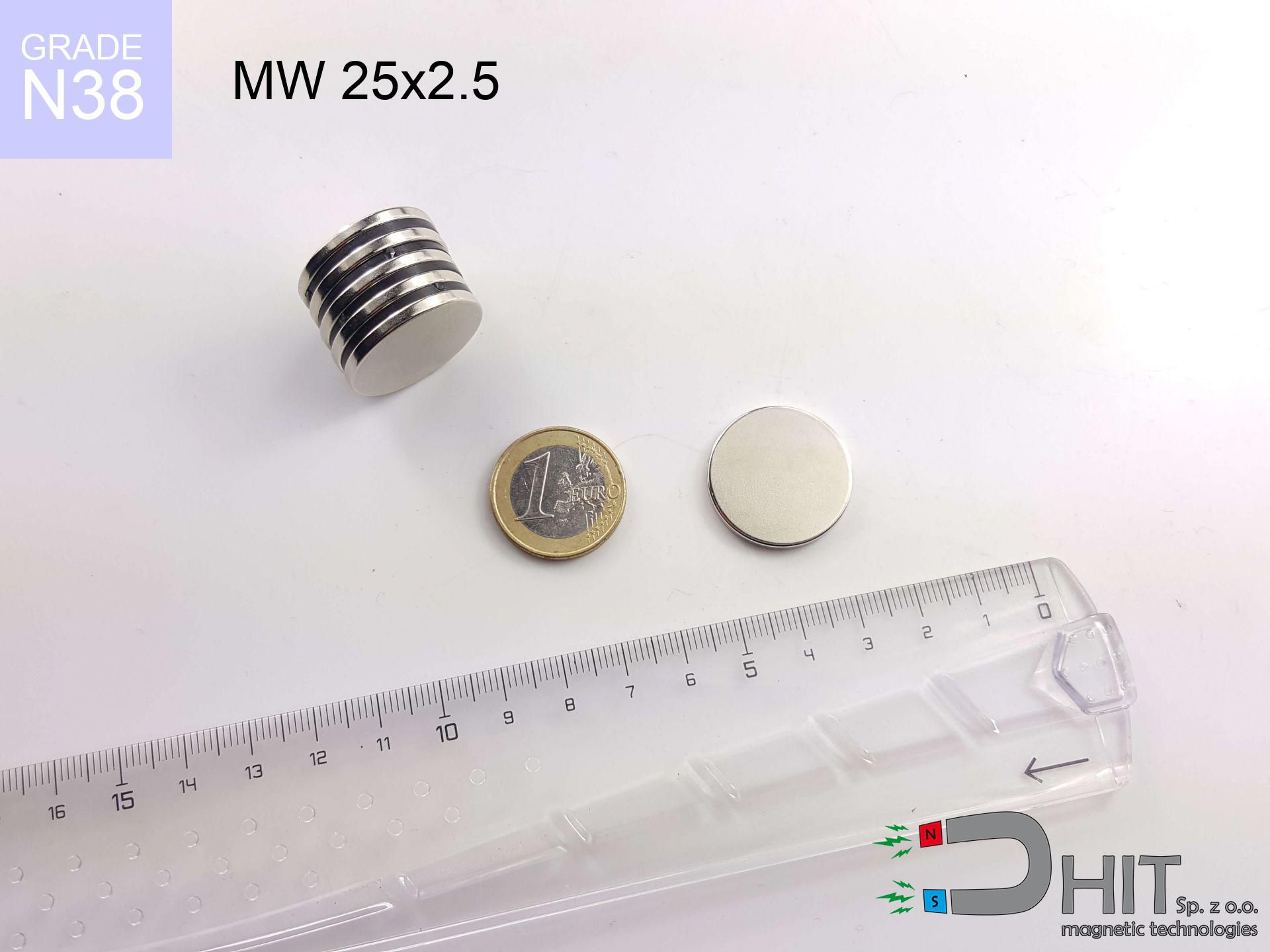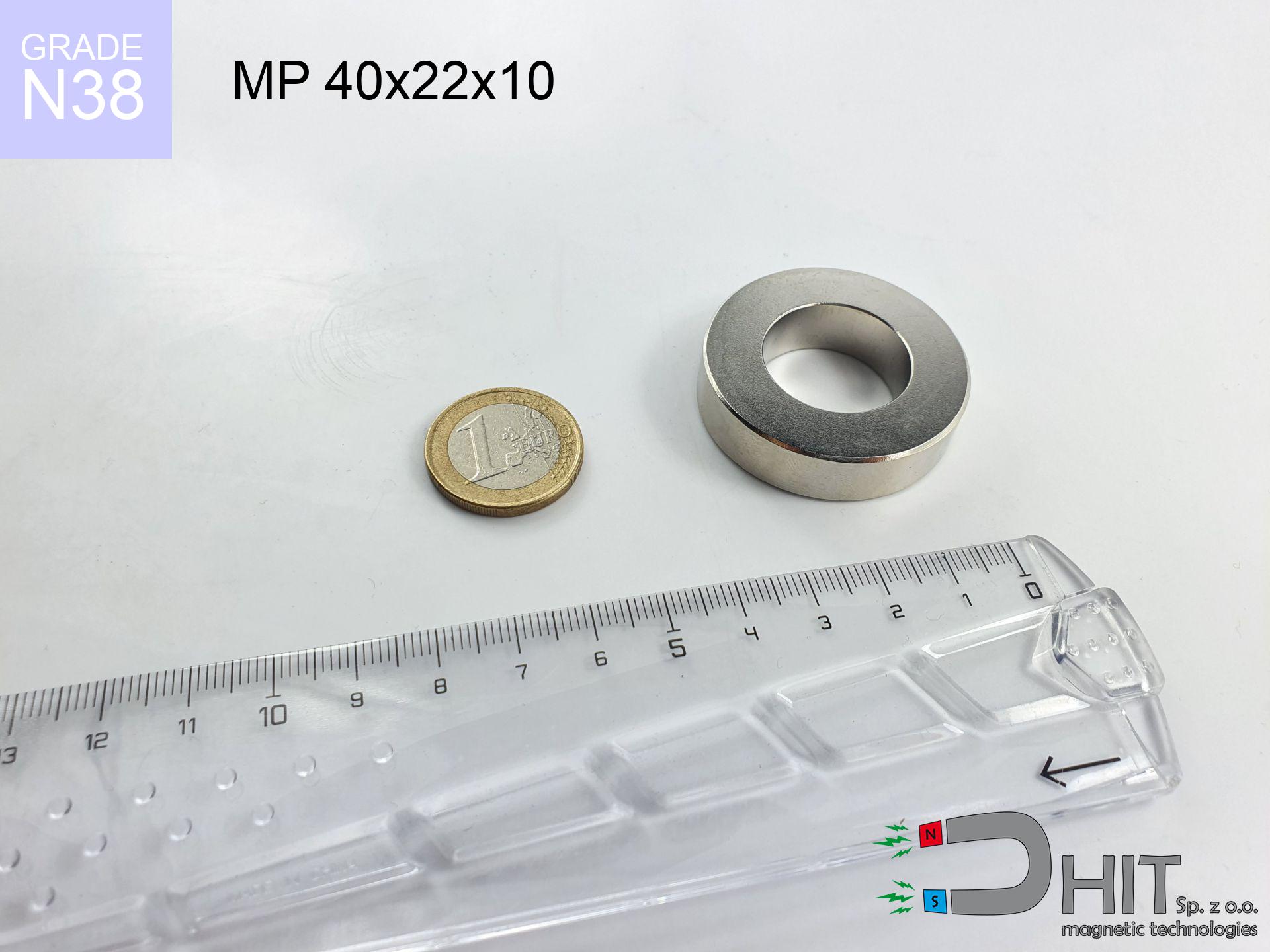UMGGW 88x8.5 [M6] GW / N38 - magnetic holder rubber internal thread
magnetic holder rubber internal thread
Catalog no 160309
GTIN/EAN: 5906301813675
Diameter Ø
88 mm [±1 mm]
Height
8.5 mm [±1 mm]
Weight
186 g
Load capacity
42.90 kg / 420.71 N
40.59 ZŁ with VAT / pcs + price for transport
33.00 ZŁ net + 23% VAT / pcs
bulk discounts:
Need more?
Call us now
+48 888 99 98 98
otherwise send us a note via
inquiry form
the contact form page.
Specifications along with form of magnetic components can be reviewed with our
online calculation tool.
Orders placed before 14:00 will be shipped the same business day.
Detailed specification - UMGGW 88x8.5 [M6] GW / N38 - magnetic holder rubber internal thread
Specification / characteristics - UMGGW 88x8.5 [M6] GW / N38 - magnetic holder rubber internal thread
| properties | values |
|---|---|
| Cat. no. | 160309 |
| GTIN/EAN | 5906301813675 |
| Production/Distribution | Dhit sp. z o.o. |
| Country of origin | Poland / China / Germany |
| Customs code | 85059029 |
| Diameter Ø | 88 mm [±1 mm] |
| Height | 8.5 mm [±1 mm] |
| Weight | 186 g |
| Load capacity ~ ? | 42.90 kg / 420.71 N |
| Manufacturing Tolerance | ±1 mm |
Magnetic properties of material N38
| properties | values | units |
|---|---|---|
| remenance Br [min. - max.] ? | 12.2-12.6 | kGs |
| remenance Br [min. - max.] ? | 1220-1260 | mT |
| coercivity bHc ? | 10.8-11.5 | kOe |
| coercivity bHc ? | 860-915 | kA/m |
| actual internal force iHc | ≥ 12 | kOe |
| actual internal force iHc | ≥ 955 | kA/m |
| energy density [min. - max.] ? | 36-38 | BH max MGOe |
| energy density [min. - max.] ? | 287-303 | BH max KJ/m |
| max. temperature ? | ≤ 80 | °C |
Physical properties of sintered neodymium magnets Nd2Fe14B at 20°C
| properties | values | units |
|---|---|---|
| Vickers hardness | ≥550 | Hv |
| Density | ≥7.4 | g/cm3 |
| Curie Temperature TC | 312 - 380 | °C |
| Curie Temperature TF | 593 - 716 | °F |
| Specific resistance | 150 | μΩ⋅cm |
| Bending strength | 250 | MPa |
| Compressive strength | 1000~1100 | MPa |
| Thermal expansion parallel (∥) to orientation (M) | (3-4) x 10-6 | °C-1 |
| Thermal expansion perpendicular (⊥) to orientation (M) | -(1-3) x 10-6 | °C-1 |
| Young's modulus | 1.7 x 104 | kg/mm² |
Material specification
| iron (Fe) | 64% – 68% |
| neodymium (Nd) | 29% – 32% |
| boron (B) | 1.1% – 1.2% |
| dysprosium (Dy) | 0.5% – 2.0% |
| coating (Ni-Cu-Ni) | < 0.05% |
Environmental data
| recyclability (EoL) | 100% |
| recycled raw materials | ~10% (pre-cons) |
| carbon footprint | low / zredukowany |
| waste code (EWC) | 16 02 16 |
Other deals
Pros and cons of rare earth magnets.
Advantages
- They do not lose strength, even after around 10 years – the drop in lifting capacity is only ~1% (theoretically),
- They feature excellent resistance to magnetism drop when exposed to opposing magnetic fields,
- A magnet with a shiny nickel surface has an effective appearance,
- Magnets exhibit extremely high magnetic induction on the surface,
- Thanks to resistance to high temperature, they are capable of working (depending on the form) even at temperatures up to 230°C and higher...
- Thanks to flexibility in constructing and the ability to adapt to specific needs,
- Significant place in innovative solutions – they are utilized in HDD drives, drive modules, medical devices, as well as multitasking production systems.
- Relatively small size with high pulling force – neodymium magnets offer strong magnetic field in compact dimensions, which allows their use in small systems
Limitations
- To avoid cracks upon strong impacts, we suggest using special steel housings. Such a solution protects the magnet and simultaneously increases its durability.
- NdFeB magnets demagnetize when exposed to high temperatures. After reaching 80°C, many of them experience permanent drop of power (a factor is the shape as well as dimensions of the magnet). We offer magnets specially adapted to work at temperatures up to 230°C marked [AH], which are extremely resistant to heat
- Magnets exposed to a humid environment can corrode. Therefore when using outdoors, we advise using water-impermeable magnets made of rubber, plastic or other material resistant to moisture
- Limited possibility of making nuts in the magnet and complicated forms - recommended is cover - magnetic holder.
- Possible danger resulting from small fragments of magnets pose a threat, in case of ingestion, which becomes key in the context of child health protection. Additionally, tiny parts of these devices can disrupt the diagnostic process medical when they are in the body.
- High unit price – neodymium magnets cost more than other types of magnets (e.g. ferrite), which can limit application in large quantities
Lifting parameters
Breakaway strength of the magnet in ideal conditions – what it depends on?
- on a plate made of structural steel, perfectly concentrating the magnetic field
- whose transverse dimension reaches at least 10 mm
- with an ideally smooth contact surface
- without any clearance between the magnet and steel
- under perpendicular application of breakaway force (90-degree angle)
- at ambient temperature approx. 20 degrees Celsius
Determinants of practical lifting force of a magnet
- Gap between magnet and steel – even a fraction of a millimeter of distance (caused e.g. by varnish or unevenness) drastically reduces the magnet efficiency, often by half at just 0.5 mm.
- Pull-off angle – remember that the magnet has greatest strength perpendicularly. Under shear forces, the capacity drops significantly, often to levels of 20-30% of the maximum value.
- Element thickness – for full efficiency, the steel must be sufficiently thick. Thin sheet restricts the lifting capacity (the magnet "punches through" it).
- Material type – ideal substrate is high-permeability steel. Stainless steels may have worse magnetic properties.
- Base smoothness – the smoother and more polished the plate, the better the adhesion and stronger the hold. Unevenness creates an air distance.
- Thermal factor – high temperature weakens pulling force. Too high temperature can permanently demagnetize the magnet.
Holding force was checked on the plate surface of 20 mm thickness, when the force acted perpendicularly, in contrast under parallel forces the load capacity is reduced by as much as fivefold. Moreover, even a slight gap between the magnet’s surface and the plate reduces the load capacity.
Warnings
Safe distance
Powerful magnetic fields can corrupt files on payment cards, HDDs, and other magnetic media. Stay away of min. 10 cm.
Phone sensors
Be aware: neodymium magnets produce a field that confuses sensitive sensors. Maintain a safe distance from your mobile, tablet, and GPS.
ICD Warning
Patients with a pacemaker must maintain an absolute distance from magnets. The magnetism can disrupt the operation of the life-saving device.
Immense force
Before starting, read the rules. Sudden snapping can break the magnet or injure your hand. Be predictive.
Do not drill into magnets
Drilling and cutting of neodymium magnets poses a fire risk. Neodymium dust reacts violently with oxygen and is difficult to extinguish.
Nickel allergy
Studies show that nickel (standard magnet coating) is a potent allergen. If you have an allergy, prevent direct skin contact or select versions in plastic housing.
Permanent damage
Regular neodymium magnets (grade N) lose magnetization when the temperature exceeds 80°C. This process is irreversible.
This is not a toy
Only for adults. Small elements can be swallowed, leading to serious injuries. Store away from children and animals.
Crushing risk
Danger of trauma: The attraction force is so immense that it can result in hematomas, pinching, and even bone fractures. Protective gloves are recommended.
Beware of splinters
Neodymium magnets are sintered ceramics, meaning they are very brittle. Impact of two magnets will cause them breaking into shards.

![Rubberized magnet UMGGW 88x8.5 [M6] GW / N38 Rubberized magnet UMGGW 88x8.5 [M6] GW / N38](https://cdn3.dhit.pl/graphics/banners/magnet.webp)
![UMGGW 88x8.5 [M6] GW / N38 - magnetic holder rubber internal thread](https://cdn3.dhit.pl/graphics/products/umg-88x8.5-m8-gw-let.jpg)


![UMGZ 75x34x18 [M10] GZ / N38 - magnetic holder external thread UMGZ 75x34x18 [M10] GZ / N38 - magnetic holder external thread](https://cdn3.dhit.pl/graphics/products/umgw-75x34x18-m10-gz-xid.jpg)


